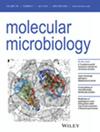Enzymatic and Structural Roles of Candida albicans Rev1 in DNA Damage Response and Disseminated Candidiasis.
IF 2.6
2区 生物学
Q3 BIOCHEMISTRY & MOLECULAR BIOLOGY
引用次数: 0
Abstract
Translesion DNA synthesis (TLS) is a fundamental biological process that enables DNA replication through various lesions to ensure genome stability and to prevent cell death due to replication fork collapse. Rev1, a member of Y-family DNA polymerase (Pol), functions in concert with a B-family enzyme Polζ in promoting TLS through various lesions. Interestingly, for such a function, the catalytic activity of Rev1 seems to be dispensable in Saccharomyces cerevisiae. Unlike Polζ, which possesses robust DNA polymerase activity, biochemical assays suggest that Rev1 predominantly incorporates a "C" opposite any templating residues, but the biological relevance of this activity of Rev1 remains elusive. Here we characterized Rev1 from Candida albicans, an opportunistic fungal pathogen responsible for maximum casualties due to systemic candidiasis in immunosuppressed individuals. Concerted genetic analyses of several Rev1 mutants in various DNA-damaging conditions suggested that in most lesion bypasses except 4-NQO-induced DNA lesions, the catalytic role of Rev1 is not important. However, simultaneous interactions of BRCT and the C-terminal domain of Rev1 with PCNA and Polζ, respectively, enable Rev1 to be essential during TLS. DNA damage recovery and mutagenesis assays further confirmed the lesion-specific roles of various domains of Rev1. Contrary to ex vivo data, animal studies suggested that CaRev1 is dispensable for systemic candidiasis development. We discuss the possible involvement of other TLS DNA polymerases in DNA damage response while C. albicans replicates and establishes itself in the host.白色念珠菌Rev1在DNA损伤反应和播散性念珠菌病中的酶和结构作用。
翻译DNA合成(transesion DNA synthesis, TLS)是一个基本的生物学过程,它使DNA能够通过各种病变进行复制,以确保基因组的稳定性,并防止复制叉崩溃导致细胞死亡。Rev1是y家族DNA聚合酶(Pol)的成员,与b家族酶Polζ协同作用,促进TLS通过各种病变。有趣的是,对于这样的功能,Rev1的催化活性似乎在酿酒酵母中是必不可少的。与Polζ不同,它具有强大的DNA聚合酶活性,生化分析表明Rev1主要包含与任何模板残基相反的“C”,但Rev1活性的生物学相关性仍然难以捉摸。在这里,我们鉴定了来自白色念珠菌的Rev1,这是一种机会性真菌病原体,在免疫抑制的个体中,由于全身念珠菌病造成的最大伤亡。对不同DNA损伤条件下几种Rev1突变体的一致遗传分析表明,除了4- nqo诱导的DNA损伤外,在大多数病变旁路中,Rev1的催化作用并不重要。然而,BRCT和Rev1的c端结构域分别与PCNA和Polζ同时相互作用,使得Rev1在TLS过程中至关重要。DNA损伤恢复和突变分析进一步证实了Rev1不同结构域的损伤特异性作用。与离体数据相反,动物研究表明,CaRev1对于全身念珠菌病的发展是必不可少的。我们讨论了当白色念珠菌复制并在宿主中建立自己时,其他TLS DNA聚合酶可能参与DNA损伤反应。
本文章由计算机程序翻译,如有差异,请以英文原文为准。
求助全文
约1分钟内获得全文
求助全文
来源期刊

Molecular Microbiology
生物-生化与分子生物学
CiteScore
7.20
自引率
5.60%
发文量
132
审稿时长
1.7 months
期刊介绍:
Molecular Microbiology, the leading primary journal in the microbial sciences, publishes molecular studies of Bacteria, Archaea, eukaryotic microorganisms, and their viruses.
Research papers should lead to a deeper understanding of the molecular principles underlying basic physiological processes or mechanisms. Appropriate topics include gene expression and regulation, pathogenicity and virulence, physiology and metabolism, synthesis of macromolecules (proteins, nucleic acids, lipids, polysaccharides, etc), cell biology and subcellular organization, membrane biogenesis and function, traffic and transport, cell-cell communication and signalling pathways, evolution and gene transfer. Articles focused on host responses (cellular or immunological) to pathogens or on microbial ecology should be directed to our sister journals Cellular Microbiology and Environmental Microbiology, respectively.
 求助内容:
求助内容: 应助结果提醒方式:
应助结果提醒方式:


